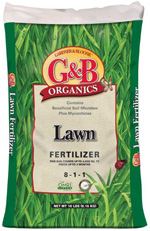|

    
 
|
 |
Featured Quote: "Bittersweet October. The mellow, messy, leaf-kicking, perfect pause between the opposing miseries of summer and winter." |

|
If you're looking for a plant to provide color for the fall and winter shade garden, cyclamen is a great choice. But cyclamen can do much more than that: even though it is technically a bulb, it doesn't really act like one. What do we mean? Aside from the fact that it does go dormant like most bulbs, unlike most bulbs it will grow almost as happily in the house as it does outdoors (providing a few simple rules are observed) and it blooms for a much longer period, from fall through spring. The appearance of the plant and its blooms is endlessly fascinating. The leaves are heart-shaped and grow luxuriantly to form a dense mound; these leaves can be mostly green or mostly silver with beautiful contrasting markings. The profuse flowers that stand well above this mass of foliage resemble graceful butterflies and come in red, white, pink, lavender and bi-colors. When planting your cyclamen outdoors, choose a shady to semi-shady spot with good drainage. It is important not to plant them too deeply; keep the top of the tuber slightly above the surrounding soil (this also helps keep water away from the crown of the plant, which can cause the tuber to rot). Feed regularly while the plant is actively growing and producing flowers; your plant will continue to grow and bloom from fall through early spring. As soon as the flowers begin to fade, snap the stems off near the base of the plant; likewise remove any dying foliage. Consider planting cyclamen in large groups of the same color or possibly two contrasting colors. A great combination is red and white--each color plays up the other to the greatest extent. Cyclamen are also very effective in mixed container plantings with pansies or ornamental kale or cabbage, possibly with some variegated needlepoint ivy draping over the sides. If you plan to grow your cyclamen indoors, choose a well-lit spot away from heater vents but out of cold drafts. Cyclamen prefers high humidity during the winter, so place your container in a tray full of pebbles with some water in it (do not let the pot sit in the water--the pebbles will help raise it up a little higher). Keep the plant well groomed and continue feeding with a liquid fertilizer. If you have a decorative pot the right size, you can simply slip your plant, nursery container and all, right into it. One caveat: if the outside pot you choose does not have drainage holes, make sure to remove your plant to water it and let it drain thoroughly. If you allow your cyclamen to stand in water, it will quickly die. Cyclamen do not mind being in a tight space, so it probably won't be necessary to repot it right away. If you do decide to repot your plant, use a good quality potting soil and choose a container just a little larger than the original one (make sure that the new pot has drainage holes). Given the right care, you can keep your cyclamen from year to year. When the weather begins to get very warm (mid-spring to early summer) it will stop blooming and the foliage will begin to die back. If it is in a pot, place it in a shady spot, where it will get occasional (but not frequent) water until it begins to grow again in the fall. If it is planted in the ground, it is a good idea to lift it and pot it, as it is easy to overwater it (especially in heavy soils) while it is dormant, which will cause it to rot. If you have never tried growing cyclamen before, now is the time to give it a try. We're sure you'll love them as much as we do! |

|
|
Holiday cacti are not hard to take care of, if you remember not to overwater them; getting them to bloom on time is a bit more complex. Here's how to do it:
Place the plant in a dark room or keep it covered (under a box or bag works fine) for at least 12 hours a day. When buds appear (it usually takes around four weeks), the darkening schedule can stop. As the buds get larger, move the plant gradually to where it will be displayed for the holiday, avoiding extreme temperature or lighting changes. Continue to water and feed while the plant is budding and blooming. Water only when the soil is completely dry--these plants do not like soggy roots. |

|
Most gardens have everything needed to make beautiful, fast and easy Thanksgiving floral decorations for your table and accents all through the house. Here's one project you can do in just a few minutes....You'll have fun (and experience great health benefits) foraging through your garden in the cool autumn weather. Harvest Bough — Great to hang over doorways, mirrors, mantels, and pictures. You Will Need:
Layer the bare tree branches in a crisscross pattern on a work table. Use florist wire to secure the center. Next place 2 long leaves on each side of the center. Place the leafy branches evenly on both sides of the center with the leaves pointing away from center; make sure the long leaves are not totally covered. Wire everything in place at the center and wire again at about 6" from each side of center. Cluster the 3 pine cones, wire together and then wire to the center. Using a glue gun, attach berries/pods 3 each on either side of the pine cone cluster. Optional: wind decorative holiday wire ribbon around and through the branches. Make a wire hook around the center and hang. Use your imagination! Add blades of red fountain grass or miscanthus or flower seed pods. Remember--the goal is to be resourceful and create a thing of beauty from your own backyard! |
 |
 If you have tunnels of earth suddenly appearing throughout your lawn or garden, chances are you have been paid a visit by either moles or voles. Unlike gophers, they usually don't leave any visible entry or exit holes. If you have tunnels of earth suddenly appearing throughout your lawn or garden, chances are you have been paid a visit by either moles or voles. Unlike gophers, they usually don't leave any visible entry or exit holes.
Voles are small, mouse-like rodents that are commonly called meadow or field mice, but with shorter tails, a stocky build and small eyes that distinguish them from true mice. Moles are slightly larger with longer tails. Both can inhabit garden areas but prefer a subterranean life in the soil. Moles are usually harmless except for annoying tunnels that can create air pockets around some plants, which can lead them to dry out faster. Moles feed on insects, grubs and earthworms and rarely consume plant materials. The difference between them is that voles can wreak havoc in the home landscape, attacking young plants in early spring when they are emerging from the soil.
Voles clip off the young plants and dig up the seeds; they can also consume flower bulbs and vegetable crops, leaving significant damage.
Vole damage can be costliest during the winter when a shortage of preferable foods forces them to eat the inner green bark layer of trees and shrubs. The gnawing required to reach this layer can severely damage or kill many young trees, shrubs and landscape plantings. Voles can also scar lawns by constructing runways and clipping grass very close to the roots. Though the damage done is not usually permanent, it may detract from the appearance of a well-kept garden, just as mole tunnels may.
Voles also tunnel below ground and feed on the roots of trees and shrubs. Voles have been known to travel via tunnels developed by moles to gain access to flower bulbs and other plant roots. Damage of this type is often mistakenly blamed on moles. Voles don't always cause significant property damage--but it only takes a few voles to damage a highly valued tree or flower bed and to warrant control. There are a number of approaches one can use against both voles and moles that are both preventative and controlling. If early in the season, consider using a repellant. Existing animals can be controlled by trapping or using toxic baits. |
 |
|
Why don't people use cow manure as much nowadays? Answer: With the advent of so many great all-organic fertilizers, there's really no need to add manure to your garden. You can get much better and more balanced results with regular feedings of organic plant foods, without the manure. If you really want to use manure on (or near) your food garden, please use sterilized/composted manure. It's much safer than fresh, and doesn't have as much odor. |

|
This is perfect for dipping freshly picked apples or pears into! What You Need:
Step by Step:
Yield: 2 cups of dip |
 click here for a printer friendly version of this page
click here for a printer friendly version of this page
 |
Written content © Garden Partners LLC, or respective authors. All Rights Reserved. Privacy Policy. All written content contained in this site is protected by United States copyright law and may not be reproduced, distributed, transmitted, displayed, published, or broadcast without prior written permission of Garden Partners, LLC. You may not alter or remove any trademark, copyright or other notice from copies of the content. |




